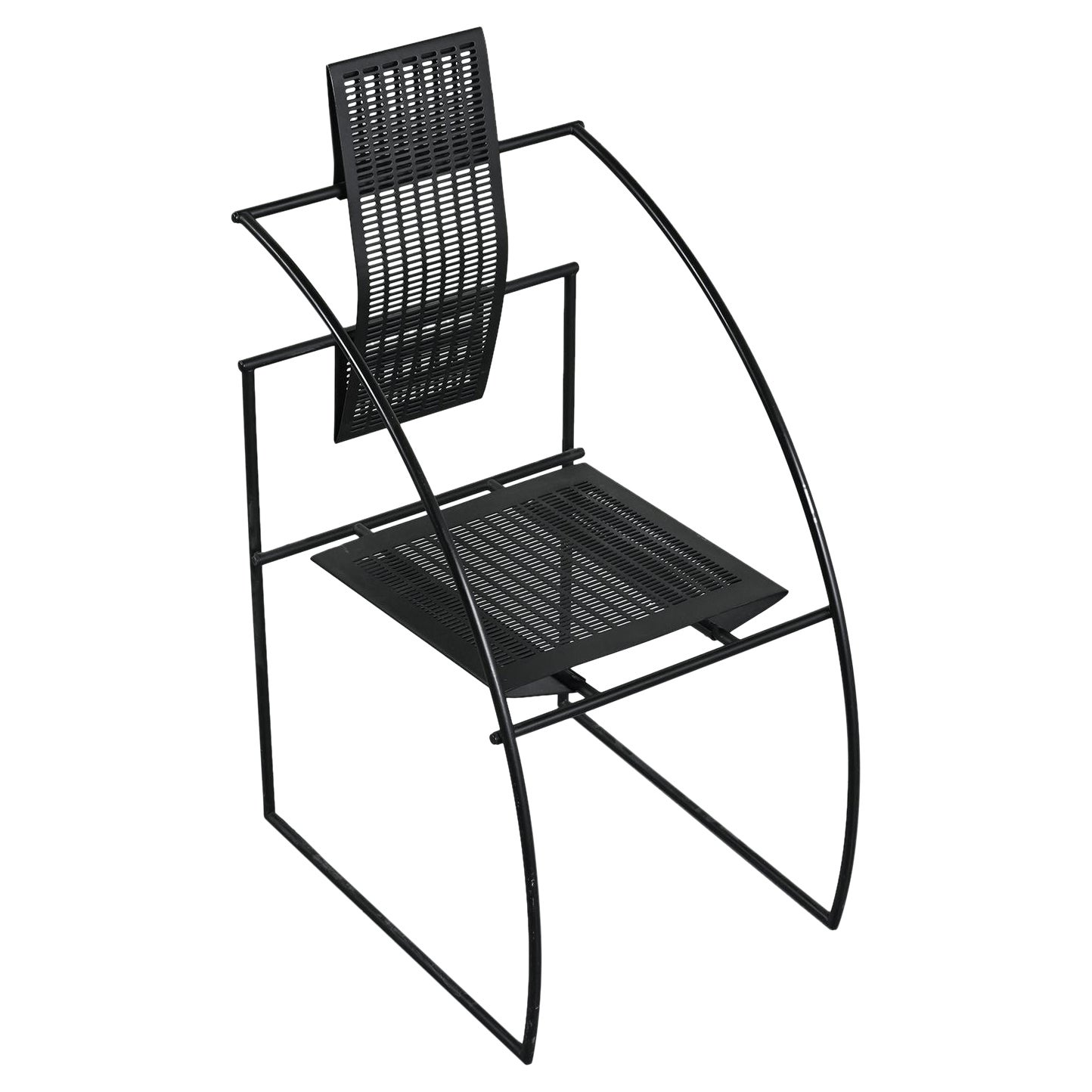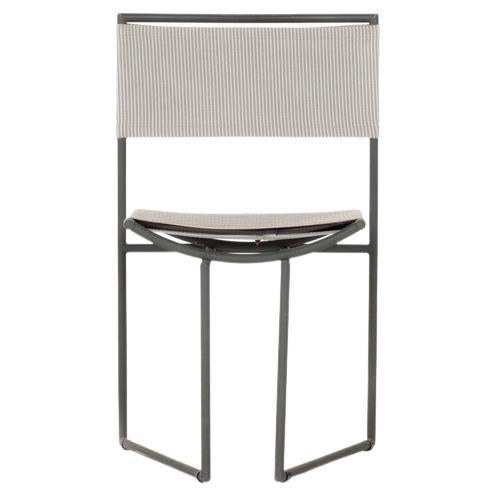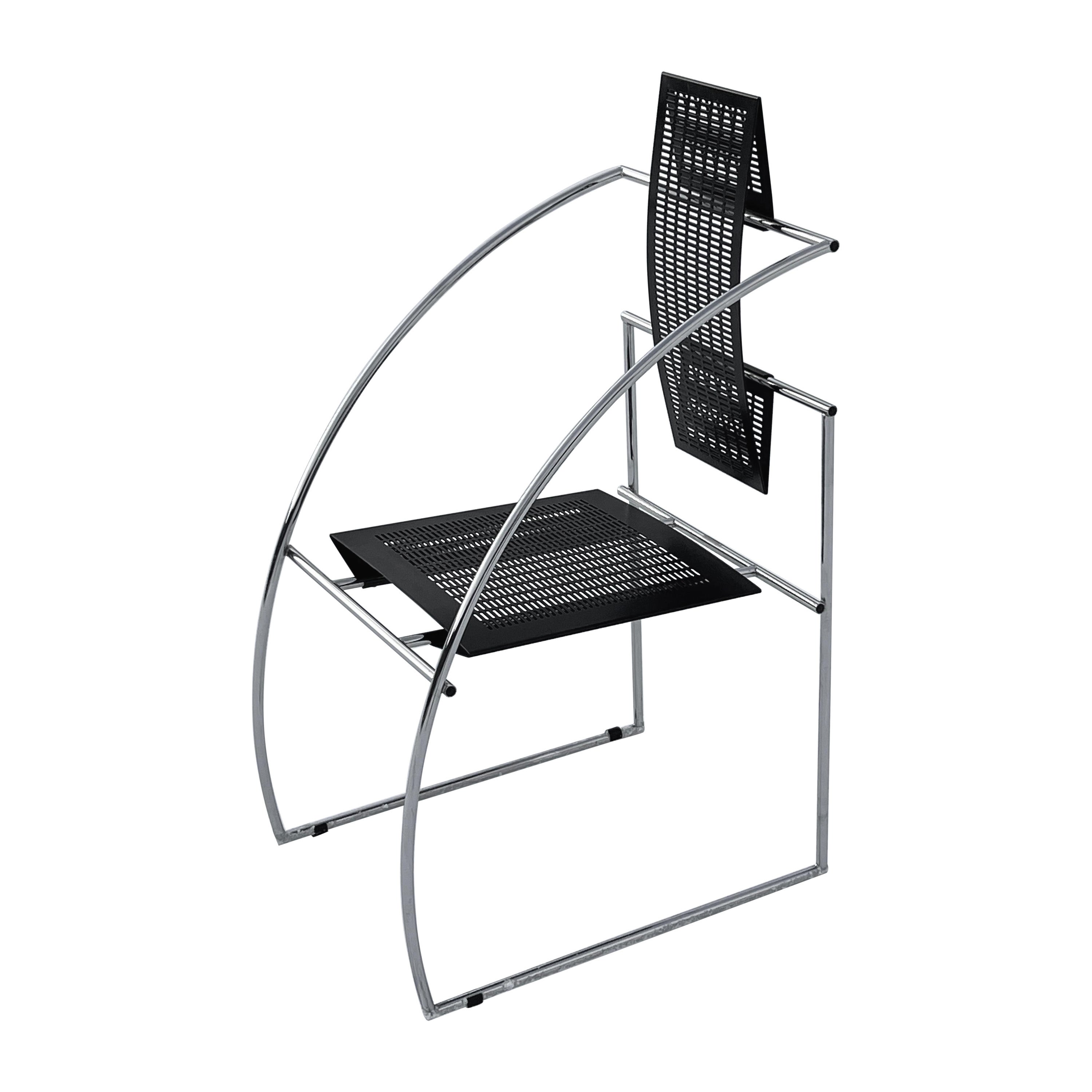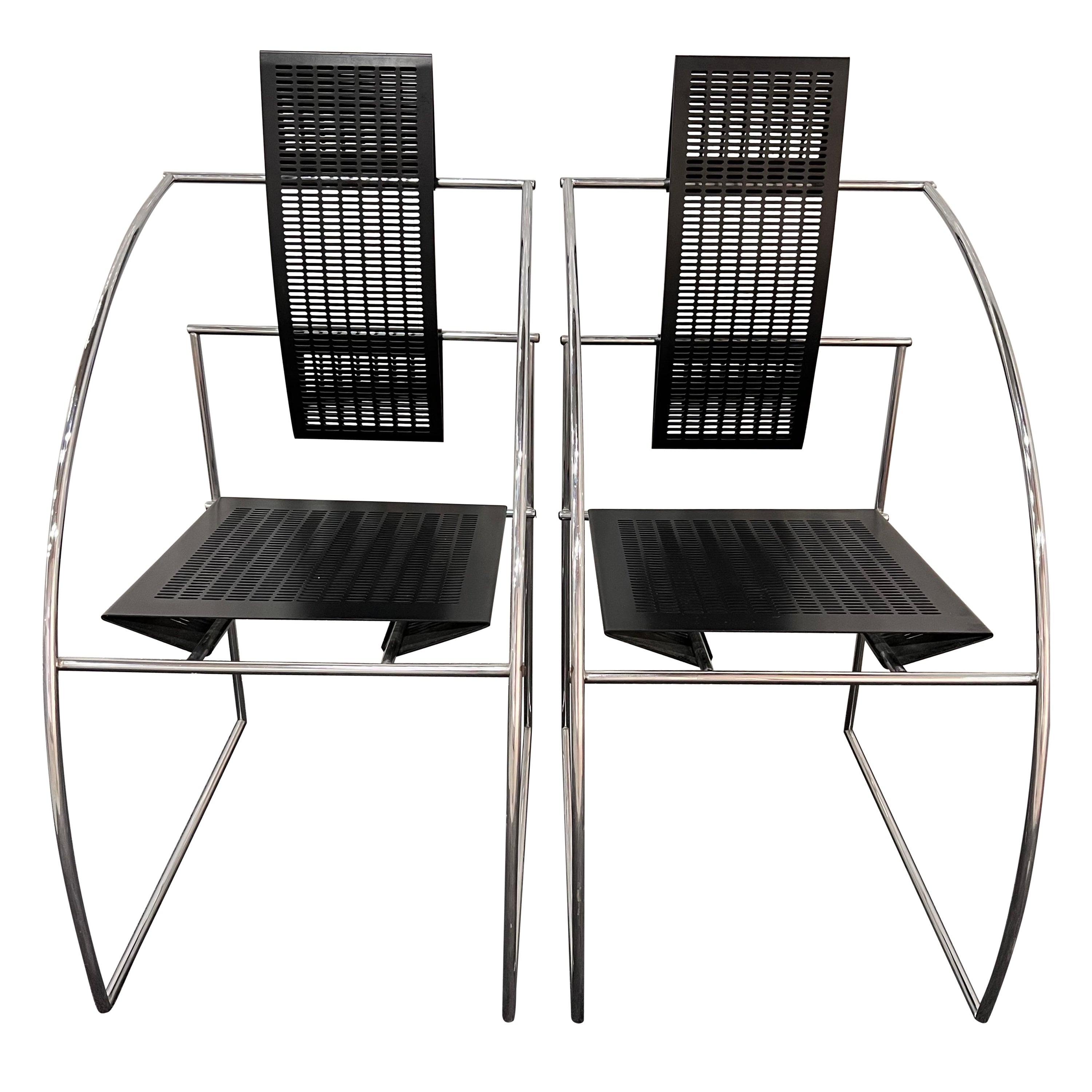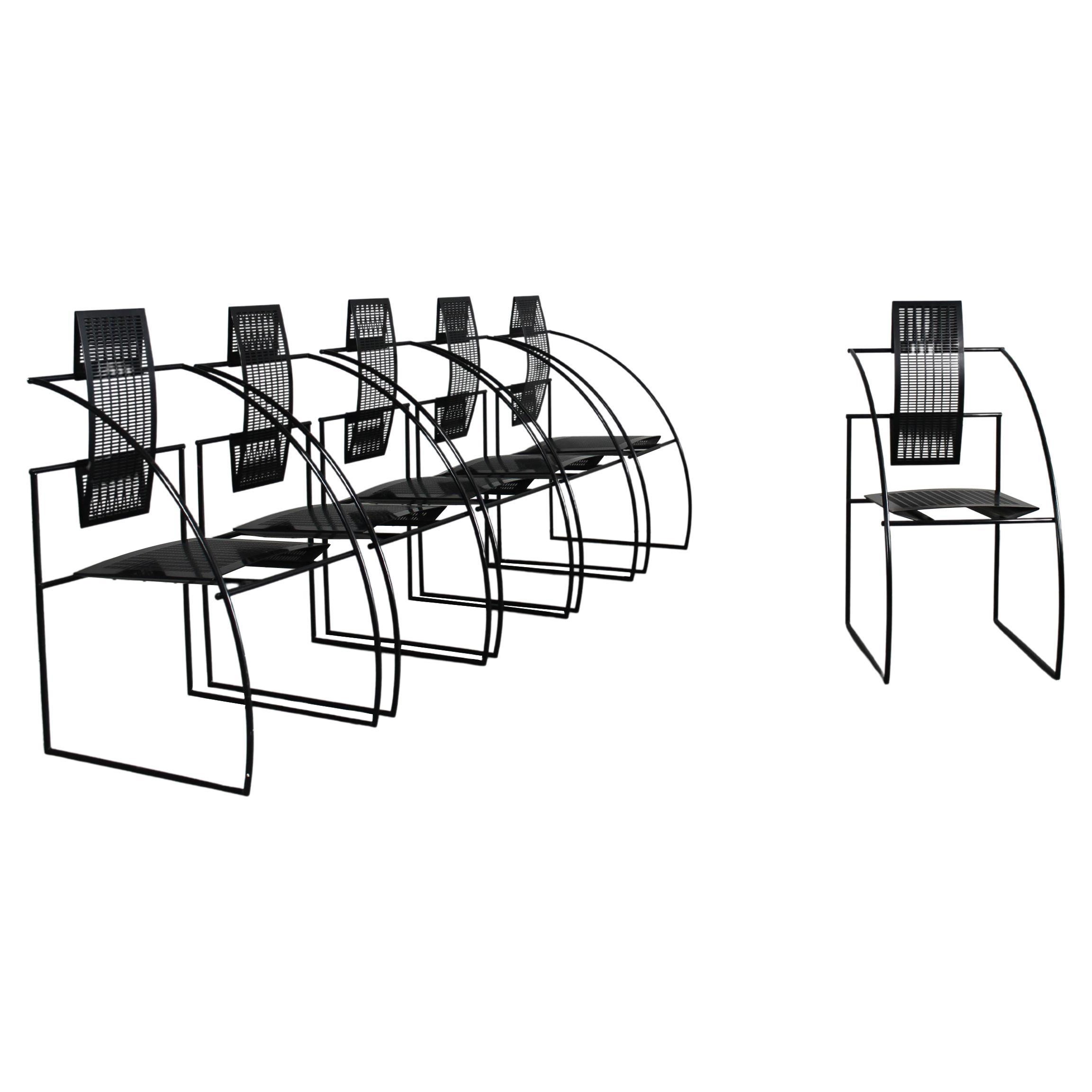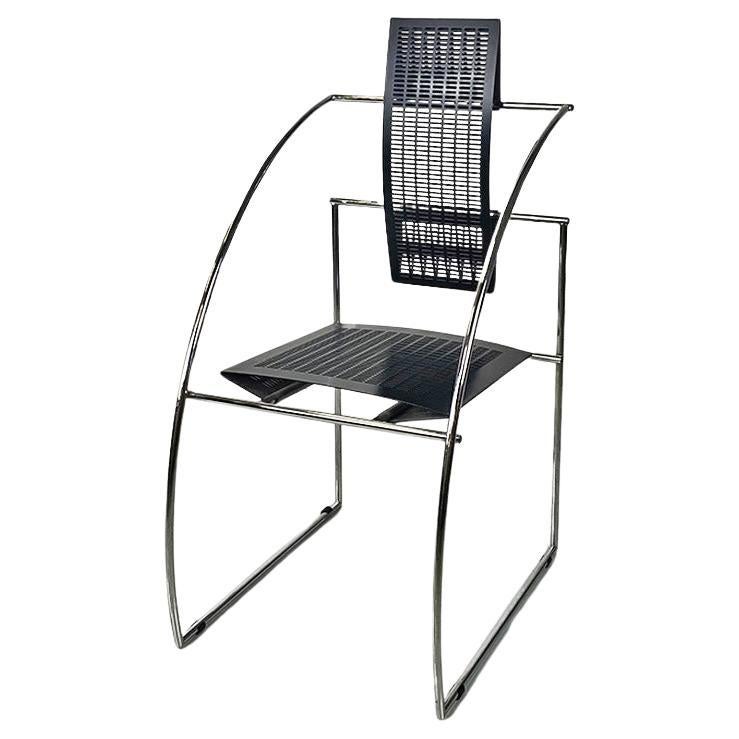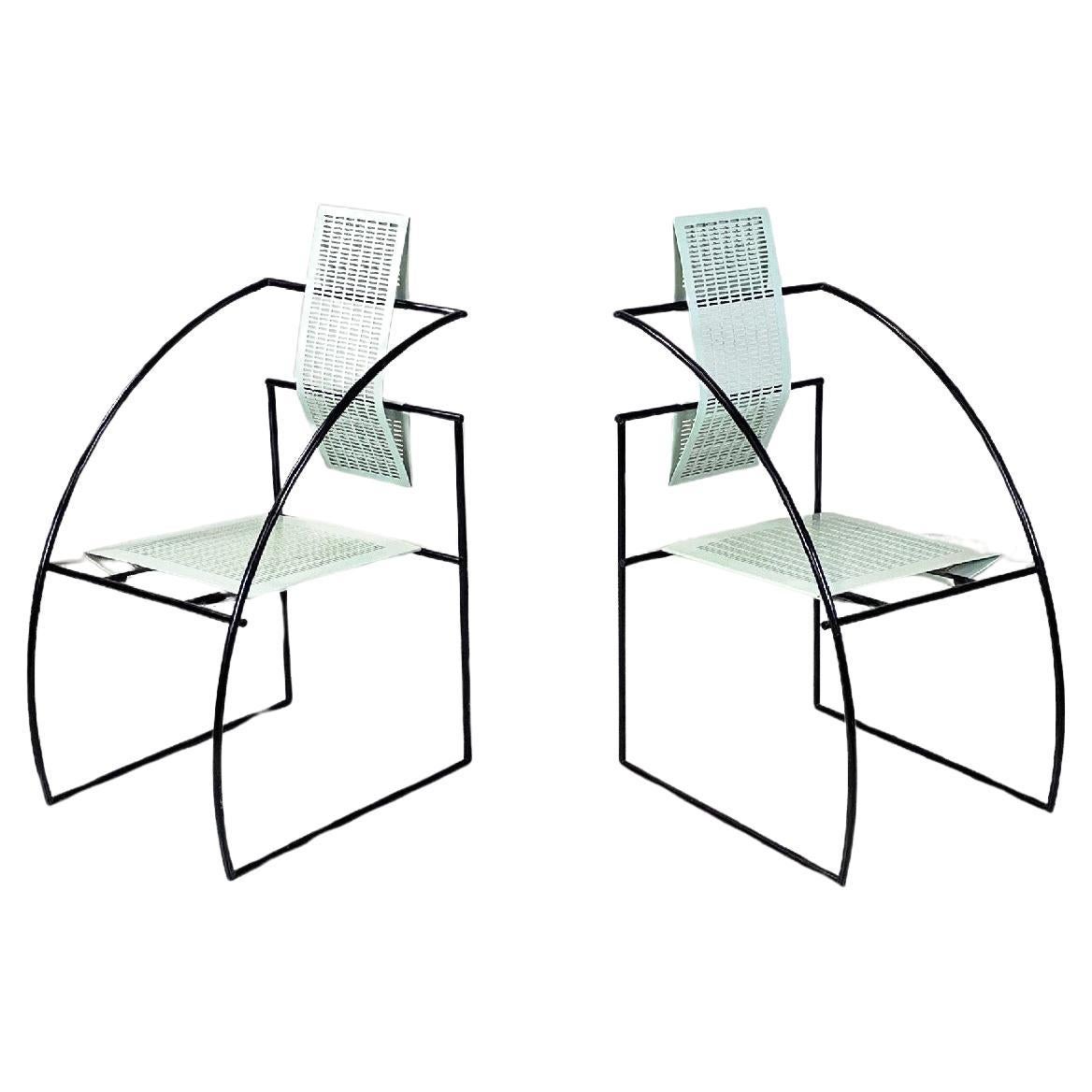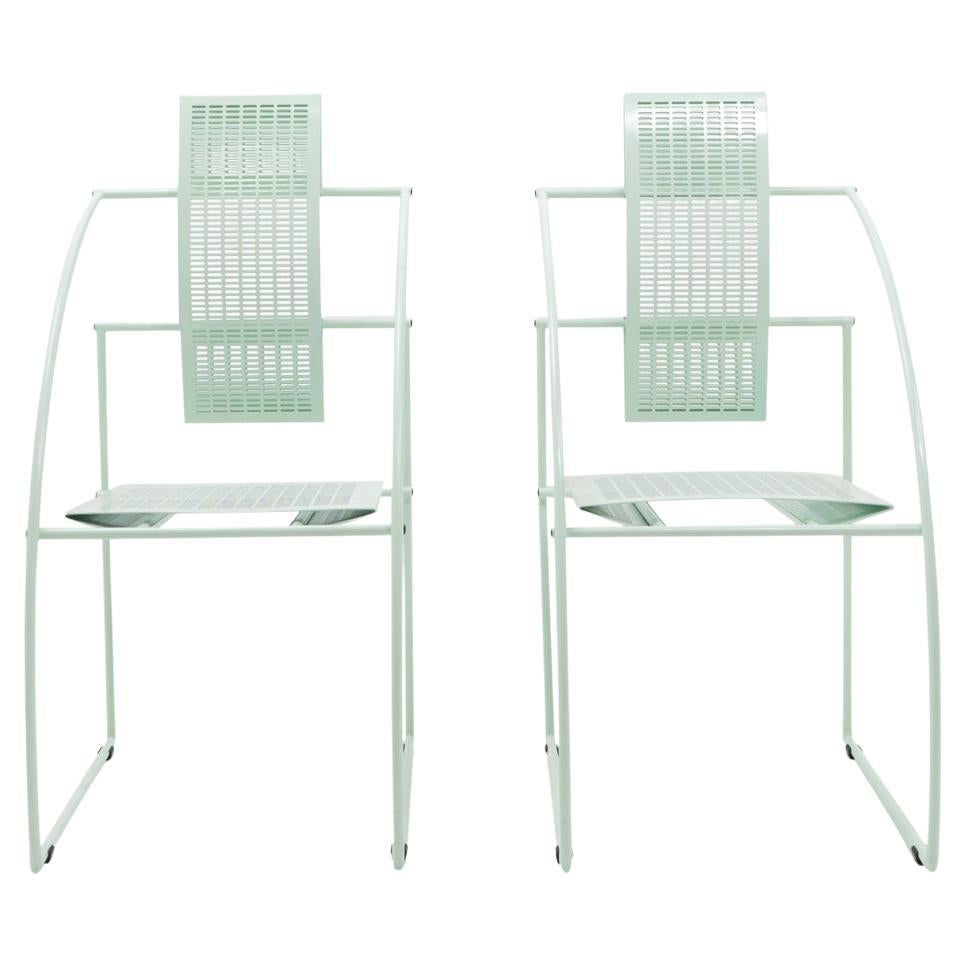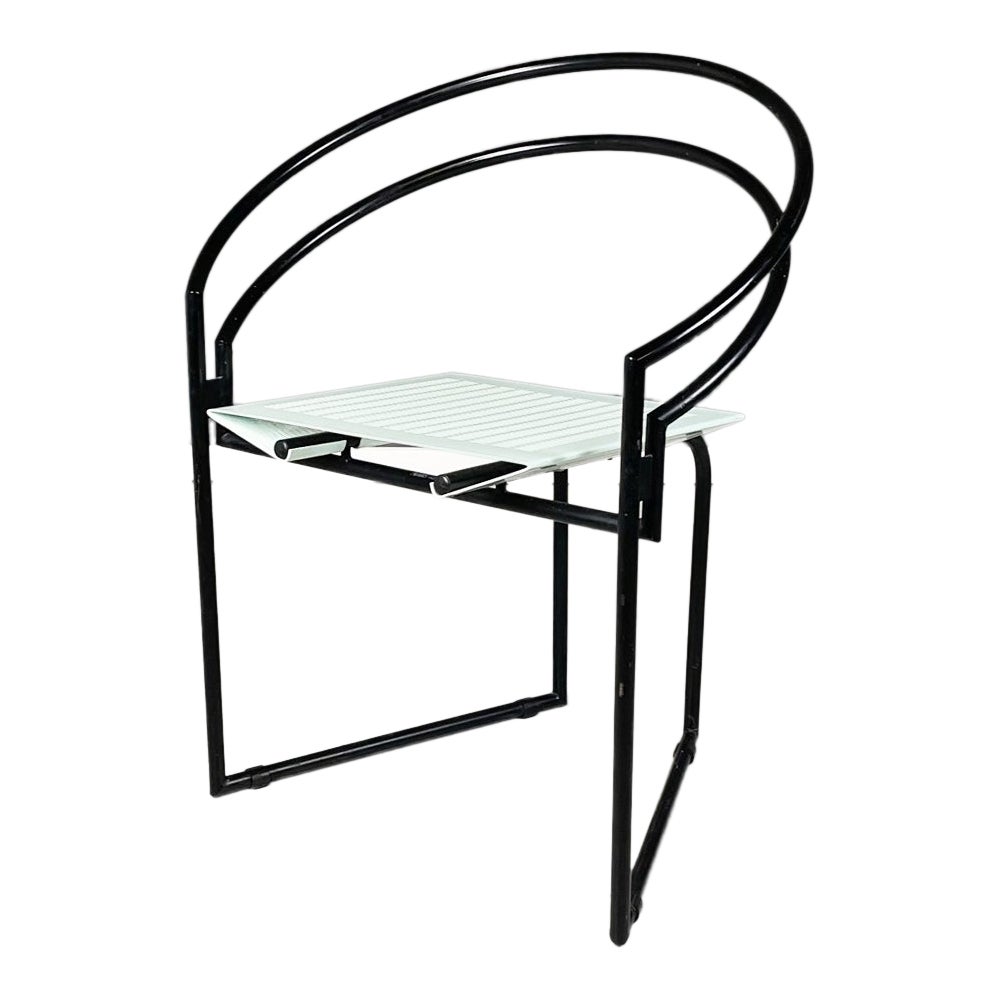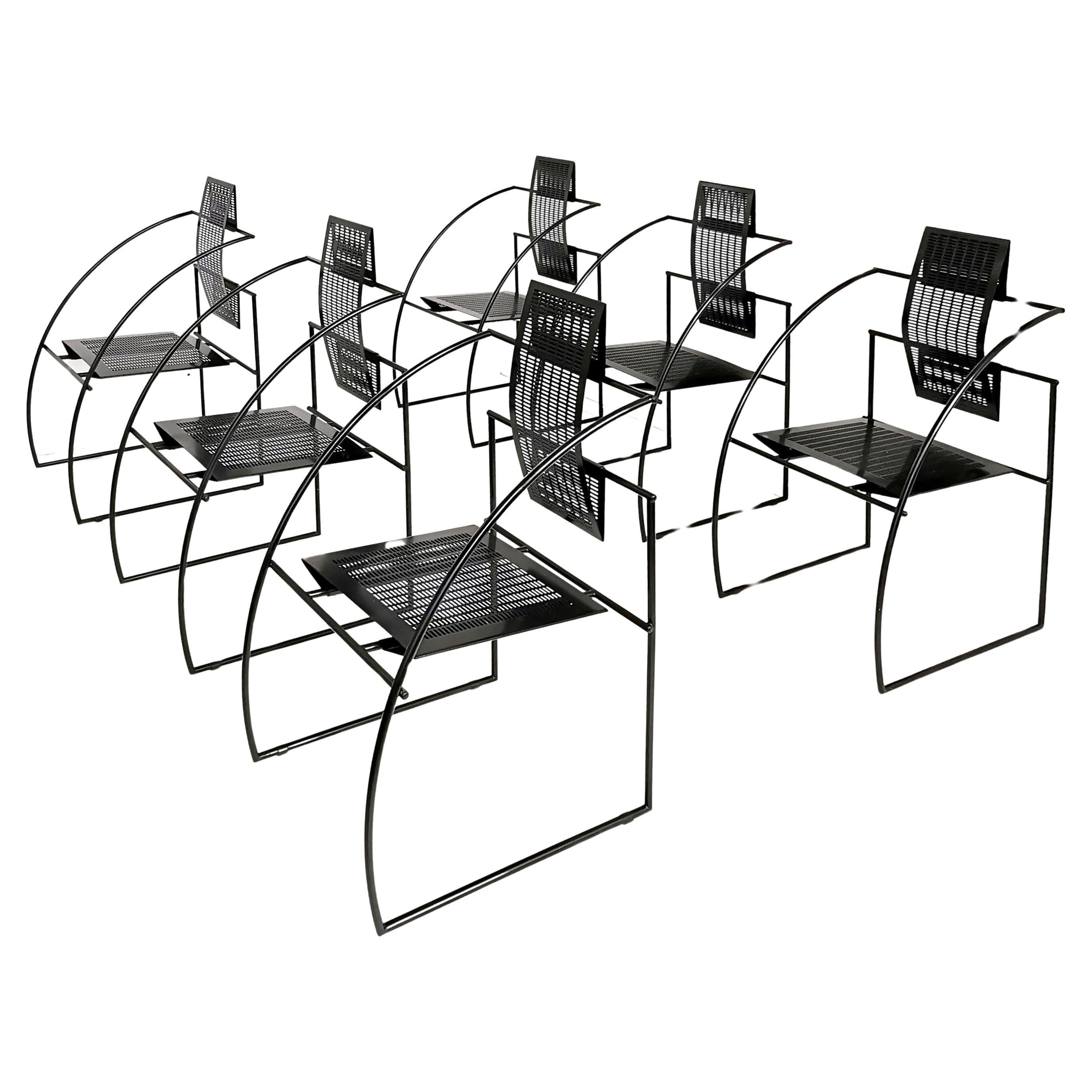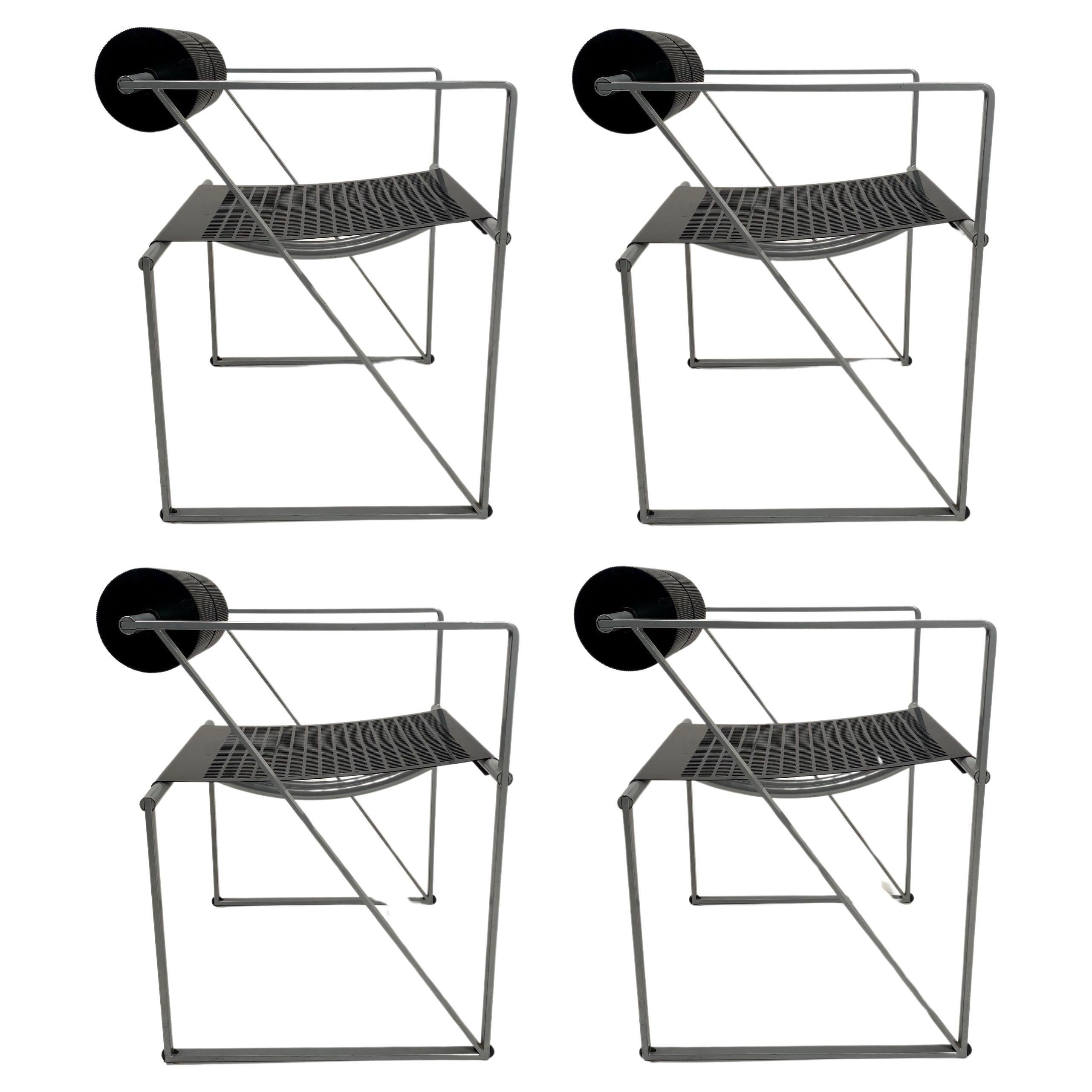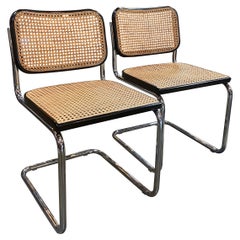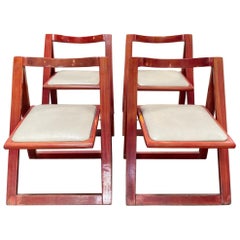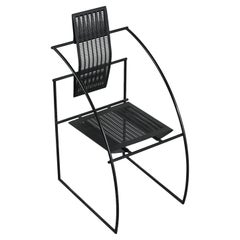
Italian 1960s Set of Eight Chairs by Mario Botta
View Similar Items
Want more images or videos?
Request additional images or videos from the seller
1 of 8
Italian 1960s Set of Eight Chairs by Mario Botta
About the Item
- Attributed to:Mario Botta (Designer)
- Dimensions:Height: 41 in (104.14 cm)Width: 17 in (43.18 cm)Depth: 19 in (48.26 cm)Seat Height: 20 in (50.8 cm)
- Sold As:Set of 8
- Materials and Techniques:
- Place of Origin:
- Period:
- Date of Manufacture:circa 1960s
- Condition:Wear consistent with age and use.
- Seller Location:Los Angeles, CA
- Reference Number:Seller: 19221stDibs: LU7946748680
About the Seller
4.6
Vetted Seller
These experienced sellers undergo a comprehensive evaluation by our team of in-house experts.
Established in 2002
1stDibs seller since 2004
300 sales on 1stDibs
Typical response time: 1 hour
Associations
20th Century Specialists
More From This SellerView All
- Set of 2 Italian Mid-Century Modern Dining Chairs by Marcel BreuerBy Marcel BreuerLocated in Los Angeles, CASet of 2 dining chair Cane Cesca ! stunning The Cesca chair was a chair design in 1928 by Marcel Breuer, using tubular steel. It was named Cesca as a tribute to Breuer’s adopted d...Category
Vintage 1970s Italian Mid-Century Modern Chairs
MaterialsChrome
$1,920 Sale Price / set20% Off - Set of 4 Jacober & d'Aniello "Trieste" Folding Chairs for Bazzani, 1966, ItalyBy BazzaniLocated in Los Angeles, CASet of 4 Jacober & d'Aniello "Trieste" folding chairs for Bazzani, 1966, Italy. Wood with white leather seat. For Alberto Bazzani Italy, circa 1966. Good vintage condition. Aldo...Category
Vintage 1960s Italian Mid-Century Modern Chairs
MaterialsLeather, Wood
$2,880 Sale Price / set20% Off - Set of 3 of ‘Panchetto’ Reclining Chairs by Rito Valla for IPE, Italy 1960sBy Rito VallaLocated in Los Angeles, CA"This elegant set includes 'Panchetto' reclining chairs in excellent condition, exemplifying the quintessential mid-century Italian design. Created by the visionary designer Rito Val...Category
Vintage 1960s Italian Mid-Century Modern Club Chairs
MaterialsMetal
- Set of 12 Wood Mid Century Italian Dining Chairs 1960sLocated in Los Angeles, CAEnrich your dining experience with this exceptional Pair of 12 Wood Mid Century Italian Dining Chairs, each meticulously recovered in lush green velvet. The elegance of mid-century I...Category
Vintage 1960s Italian Mid-Century Modern Dining Room Chairs
MaterialsTextile, Wood
- Set of 10 Mid Century Italian Folding leather Chairs 1960sLocated in Los Angeles, CAThe Set of 10 Mid Century Italian Folding Leather Chairs from the 1960s epitomizes versatility and elegance. Crafted in Italy during the mid-20th century, these chairs feature premiu...Category
Vintage 1960s Italian Mid-Century Modern Dining Room Chairs
MaterialsMetal, Brass
- Italian Midcentury Set of 4 Lounge Chairs by Ross Littell for ICF Milan, 1960sBy Ross LittellLocated in Los Angeles, CAGroovy set of four lounge chairs designed by Ross Littell and manufactured by ICF De Padova, Milan (approx. 1960s). The lounge chairs are in Minimalist style. In beautiful very goo...Category
Vintage 1960s Italian Mid-Century Modern Dining Room Chairs
MaterialsLeather
You May Also Like
- Quinta Chairs by Mario Botta, Alias Italy ca. 1985By Mario BottaLocated in VILLEURBANNE, FRPrice per SKU Chair model 605 also known as Quinta by the Italian designer Mario Botta, Black lacquered steel structure, seat and back in black perforated sheet steel. We have n...Category
Late 20th Century Italian Chairs
MaterialsSteel
- Postmodern Vintage Black Metal Armchairs Mario Botta Italy 1985, Set of SixBy Mario BottaLocated in Vienna, ATPostmodern set of six armchairs or dining chairs designed by Maria Botta 198, Italy and executed by Alias, Italy. The tube steel frame contact the perforated black sheet metal seat a...Category
Vintage 1980s Italian Post-Modern Armchairs
MaterialsSheet Metal
- Chair model 91 by Mario Botta for Alias, 1991By Alias, Mario BottaLocated in JASSANS-RIOTTIER, FRChair, model 91, designed by Mario Botta, edited by Alias (see label under the seat) made on the occasion of the 700th anniversary of the Swiss Confederation Structure in gray lacque...Category
Late 20th Century European Chairs
MaterialsMetal
- Mario Botta "Quinta" Chair for Alias 1980sBy Alias, Mario BottaLocated in Wien, WienQuinta, a chair with a legacy dating back to its creation in 1985, is not your ordinary seat; it embodies a fusion of comfort and architectural sophistication. Designed under the inf...Category
Mid-20th Century Italian Mid-Century Modern Chairs
MaterialsMetal, Stainless Steel
- Mario Botta Quinta Chairs for Alias, a PairBy Alias, Mario BottaLocated in Miami, FLPair of Quinta chairs with chrome frame and black steel seat and back by Mario Botta for Alias, 1980s.Category
Late 20th Century Italian Post-Modern Dining Room Chairs
MaterialsSteel, Chrome
$2,400 Sale Price / set20% Off - Mario Botta Set of Six 605 Quinta Chairs in Black Lacquered Steel by Alias 1980By Alias, Mario BottaLocated in Montecatini Terme, ITSet of six 605 Quinta chairs with a black steel rod frame seat and back in bent perforated sheet metal. Designed by Mario Botta for Alias in 1985 (This chair is no longer in production). The Quinta chair it's an architecture you can sit on, this design clearly shows the inspiration of iconic designer as Le Corbusier, Louis Kahn, and Carlo Scarpa, an exemplary of this iconic chair is also exhibited at the Museum of Modern Art. Mario Botta was born in 1943 in Mendrisio. After working as an apprentice draughtsman for the Lugano-based architect Tita Carloni, he moved first to Milan and then to Venice, where he enrolled at the department of Architecture at the IUAV. He completed his degree in 1969 with a thesis tutored by Carlo Scarpa – after having met Le Corbusier and Louis Kahn, who were later to be sources of inspiration – and returned to Switzerland to open his own professional firm, which at the time dealt mainly with detached family private homes. These included the villas in Riva San Vitale (1971-1973), Ligornetto (1975-1976) and Morbio Superiore (1982-1983), in which Botta treated the theme of the home as a refuge, which protects and reassures its inhabitants. These were buildings with a character that was ironic and, in a certain sense, monumental, obtained for example (in the case of Morbio) through rigorous symmetrical compositions and a particular use of raw concrete blocks set in a linear pattern and alternated with strips of silvered brick which, on the contrary, were set at 45 degrees. Partially dug into the hillside, the villa was also characterised by a theme which was particularly dear to Botta and which had already been explored in Riva San Vitale; the net distinction between solids and voids, the latter appearing to have been dug out of the building. Between 1980 and 1990, Botta associated with artists and intellectuals from all walks of life and took numerous long trips abroad. Together with Gabriele Basilico and Edoardo Sanguinetti, he published “La Casa Rotonda”, and he became friends with Max Huber, Nicki de Saint Phalle, Dante Isella, Harld Szeemann, Robert Frank and Alberto Flammer. In 1986, the MoMA in New York dedicated a solo exhibition to his work, and the Swiss architect received his first contracts for public buildings and from abroad, debuting with the Cultural Centre in Chambéry (1984-1987). In Japan, on a challenging triangular lot of only one hundred and sixty square metres, a space which remained from the opening of a new highway, Botta built a small building which, with its clarity and strength of image, attempted to stand out in the midst of the chaos that surrounded it, thanks to a thick masonry curtain raised on the main façade, in which slabs of grey marble are crossed with horizontal fissures which erode the angles and cancel the perception of the number of floors which make up the museum. The church of Mongo, on the other hand, was the first step in a long series of places of worship, including designs for the churches of Pordenone (1987-1992) and Sartiana (1987-1995), for the cathedral of Evry (1988-1995), for the basilica of Santa Maria degli Angeli on Mont Tamaro (1990-1996, for the Giovanni XXII church in Seriate (1994-2000) and for the Cymbalista synagogue in Tel Aviv (1996-1998). In each of these, light plays a predominant role as a prime generator of space and a measure for the definition of time that passes with the various phases of the day, the months and the seasons. Light is, however, the main symbolic element, representing through its variations the uneasiness of humankind in the face of divine perfection. In this same period, the scheduling for the construction of a new School of Architecture, the Mendrisio Academy, took place. Inaugurated in 1996, it offered an alternative approach to teaching in contrast to the Swiss University system, in which an important role is played by humanistic subjects and by a copious group of well-known international professors: from Rykwert to Benevolo, Burkhart, Campos Baeza, Dal Co, Frampton, Mendes da Rocha...Category
Vintage 1980s Italian Post-Modern Chairs
MaterialsSteel, Sheet Metal
